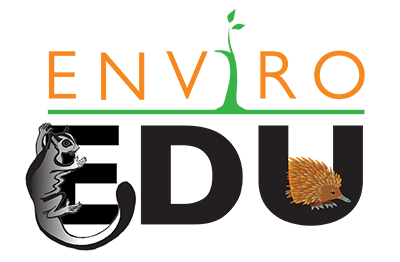

Spotted-tailed Quoll
(Dasyrus maculatus)Description: Largest of the four Australian quoll species. Average 3 – 7kg. Distribution: South-eastern Australia and Tasmania Habitat: Rainforest, open forest, woodland, coastal heath and inland riparian forest. Conservation Status: EPBC Act = Endangered; IUCN = Near threatened; VIC = Endangered Threats: Habitat loss, introduced predators, baiting and fire.


Lace Monitor
(Varanus varius)Description: Australia’s second largest monitor growing to 2m in length, with remarkable ability to climb trees. Distribution: Eastern Australia Habitat: Forests, woodlands and coastal tablelands. Conservation Status: VIC = endangered. Threats: Habitat loss and competition from introduced predators.

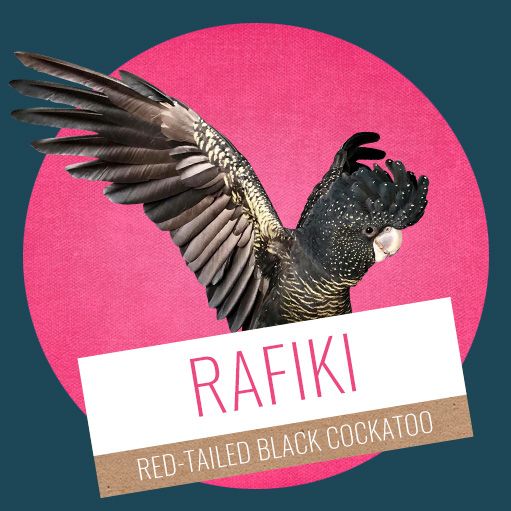
Red-tailed Black Cockatoo
(Calyptorhynchus banksii naso)Description: Active, noisy birds with black plumage. Males – red tail panels; Females banded red/orange tail, yellow spots on head, neck and wings. Distribution: Six sub-species in eight populations across Australia. Habitat: Eucalypt forests and woodlands. Conservation Status: EPBC = vulnerable. Threats: Habitat loss, invasion of nest hollows, inappropriate fire regimes.

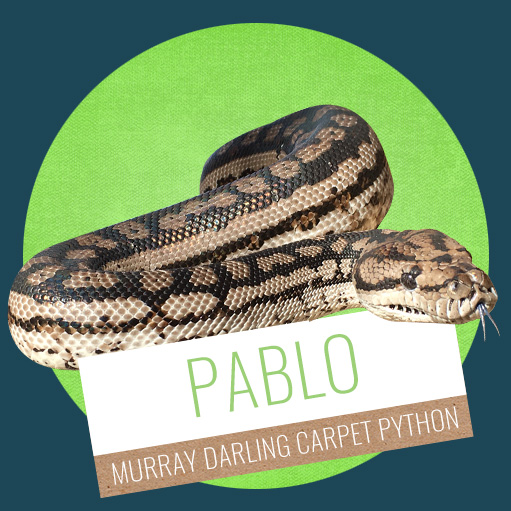
Murray Darling Carpet Python
(Morelia spilota metcalfei)Description: Mid-sized carpet python on average just over 2m in length. Distribution: Once common through the Murray Darling Basin, but numbers and range have declined significantly. Habitat: Riparian forests and woodland and rocky outcrops. Conservation Status: VIC = Endangered; SA = rare. Threats: Habitat loss, loss of hollows, introduced predators.

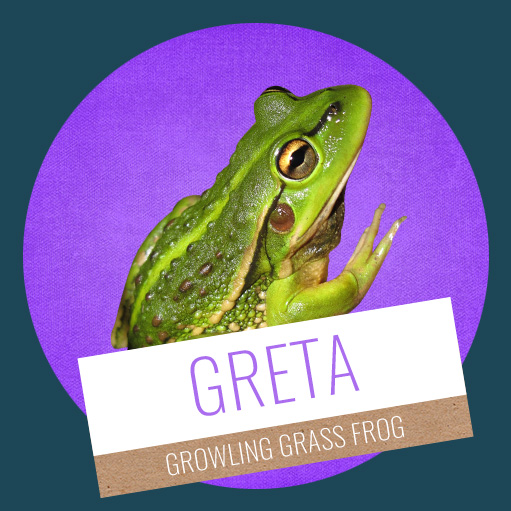
Growling Grass Frog
(Litoria raniformis)Description: One of Australia’s largest frogs, 5 – 10cm. Variations in colour. Distribution: Contracted significantly Habitat: Natural or modified wetlands with emergent water plants. Conservation Status: EPBC = vulnerable; VIC = endangered Threats: Altered flooding regime, introduced predators, disease, pollution, climate change and drought.



Brush-tailed Bettong
(Bettongia penicillata)Description: Small, nocturnal marsupial; 28 – 45cm length; approx. 1.8kg Distribution: Restricted to three isolated populations in SW WA. Habitat: Tall eucalypt forests and woodlands, dense shrublands and Mallee heath. Conservation Status: IUCN = critically endangered; EPBC = endangered; VIC = extinct Threats: Habitat destruction and introduced predators – foxes and cats.


Saltwater Crocodile
(Crocodylus porosus)Description: World’s largest living reptile at 5.5 – 6m long; 1000 kg! Distribution: Top end of Australia – WA, NT, QLD. Habitat: Coastal marshes, mangrove swamps and river mouth. Conservation Status: IUCN = Least concern; QLD = vulnerable; WA = protected Threats: Hunting prior to 1970; Habitat loss; fishing nets, introduced buffalo.



Tawny Frogmouth
(Podargus strigoides)Description: Nocturnal Australian bird often mistaken as an owl but more closely related to a Nightjar. Rely on camouflage for protection against predators. Distribution: Throughout Australia and Tasmania Habitat: Most habitats except dense rainforest and treeless deserts. Conservation Status: Secure Threats: Road kill when hunting at night.


Rough-scaled Python
(Morelia carinata)Description: Only python to have a keeled (rough) scale and longest teeth of any snake in relation to body size. Distribution: North west Kimberley region of WA. Habitat: Rocky valleys, monsoonal rainforest. Conservation Status: WA = Near threatened. One of Australia’s rarest snakes. Threats: Habitat loss, introduced predators.


Giant Burrowing Cockroach
(Macropanesthia rhinoceros)Description: Heaviest cockroach in the world, weighing 30g and 8cm in length! Nocturnal, live in burrows up to 1m deep and can live for 10 years. Distribution: Northern Queensland. Habitat: Open forest. Conservation Status: Population stable Threats: Habitat disturbance and introduced predators.



Squirrel Glider
(Petaurus norfolcensis)Description: Nocturnal gliding possum with grey-brown fur and dark stripe along back. Larger than sugar gliders. Distribution: Eastern Australia (eastern VIC – northern QLD) Habitat: Mature, old growth forest and woodland Conservation Status: VIC = endangered; NSW = vulnerable Threats: Habitat loss and fragmentation, introduced predators, changed fire regime.


Broad-shelled Turtle
(Chelodina expansa)Description: One of Australia’s largest freshwater turtles growing to 80cm. Distribution: SE Australia from southern QLD to eastern SA. Habitat: Slow moving, permanent, deep water. Conservation Status: VIC = endangered. Threats: Altered flooding regimes, loss of habitat, introduced predators (foxes and pigs) and climate change.


Eastern Regent Parrot
(Polytelis anthopeplus monarchoides)Description: Medium-sized, fast flying, long-tailed Parrot. Males = yellow; Females and Juveniles = green with contrasting blue-black wings. Distribution: Semi-arid interior of VIC, NSW and SA. Habitat: Nest – riverine habitat; feed – inland Mallee vegetation. Conservation Status: EPBC and VIC = vulnerable Threats: Loss of habitat and connectivity.



Woma Python
(Aspidites ramsayi)Description: Distinctive banded patterning of light and dark browns/orange. Distribution: Arid zones of central Australia and south west of WA. Habitat: Sandy plains Conservation Status: IUCN = Endangered; NSW = vulnerable; WA = poorly-known; QLD = near threatened; SA = rare. Threats: Habitat loss and introduced predators (foxes and cats).


Green Tree Frog
(Litoria caerulea)Description: One of Australia’s larger frogs with females growing to 11cm. Arboreal – large discs on toes to climb. Distribution: NSW, QLD and the top end of Australia. Habitat: Wetlands, heaths and common urban areas – toilets and water tanks. Conservation Status: Population stable. Threats: Disease, climate change, introduced predators, habitat loss.



Fat-tailed Dunnart
(Sminthopsis crassicaudata)Description: Small, native marsupials weighing 10 – 20g. Large black eyes and fat tail in good conditions. Distribution: WA, SA, VIC, NSW and NT Habitat: Open woodland and shrubland habitats. Conservation Status: VIC = near threatened Threats: Loss of habitat and food sources, introduced predators and inappropriate fire regime.


Eastern Bearded Dragon
(Pogona barbata)Description: Grey-brown in colour and spiky beard is displayed in defence when threatened. Distribution: East coast of Australia. Habitat: Open forests, heathland, chenopod woodlands and farmland. Conservation Status: VIC = vulnerable Threats: Habitat loss and introduced predators.



Flinder’s Rangers Scorpion
(Urodacus elongatus)Description: One of Australia’s largest scorpions – males 12cm and females 10cm in length. Distribution: Flinder’s Rangers in SA. Habitat: Burrow under rocks, commonly found in creek beds and floodplain areas with moderate rock cover. Conservation Status: Population stable. Threats: Habitat loss and disturbance, introduced predators, drought and changed fire regime.



Gammon Ranges Carpet Python
(Morelia spilota imbricata)Description: More brown in colour and more distinct bands than the Murray Darling Carpet Python. Distribution: Flinders Rangers in SA Habitat: Rocky gorges and creek lines with River Red Gum trees Conservation Status: Declining in number and range. Threats: Habitat destruction, loss of hollows, changed fire regime and introduced predators.


Savanna Glider
(Petaurus ariel)Description: Recently described as a new species. Smaller than the sugar glider with less bushy tail. Distribution: Northern Australia Habitat: Woodland savannas Conservation Status: Unconfirmed but declined in number and range. Threats: Introduced herbivores and predators (cats) and changed fire regimes.


Stimson’s Python
(Antaresia stimsoni)Description: Small, nocturnal python 1m in length. Distribution: Large distribution – arid regions of WA, NT, QLD, SA and NSW. Habitat: Rocky outcrops, arid grasslands, shrublands, woodlands and desert plains. Conservation Status: NSW = vulnerable Threats: Habitat loss and fragmentation, changed fire regimes and introduced predators.

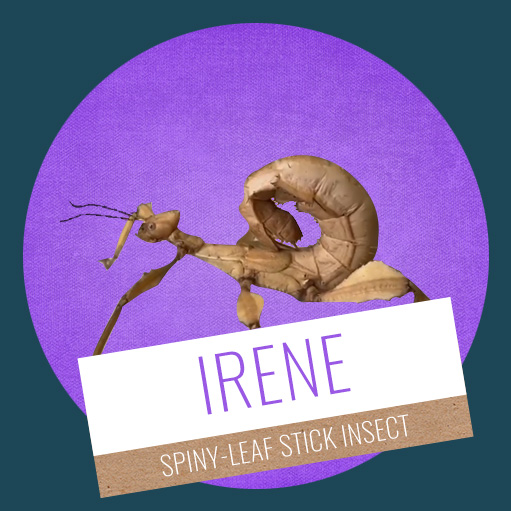
Spiny-leaf Stick Insect
(Extatosoma tiaratum)Description: Belong to the phasmid family. Females are larger than males and can grow to 20cm. Camouflage and spiky exoskeletons are used to avoid predation. Distribution: Coastal areas of NSW and QLD. Habitat: Tropical rainforest, temperate forests and grasslands. Conservation Status: Population stable. Threats: Habitat loss


Eastern Hooded Scaly-foot
(Pygopus schraderi)Description: Nocturnal legless lizard with two reduced hind limbs that look like flaps. Distribution: Dry to arid zones of NT, QLD, NSW, VIC and SA. Habitat: Open habitats, typically stony and heavy soils. Conservation Status: VIC = Critically endangered Threats: Introduced predators, habitat loss and disturbance to soil cracks.



Black-headed Python
(Aspidites melanocephalus)Description: Distinctive streamlined black head with contrasting brown banding down body. Grow to 3m. Distribution: Northern Australia from WA to QLD. Habitat: Sclerophyll forest, shrubland and vegetated deserts. Shelters in rock crevices, caves, hollow logs and termite mounds. Conservation Status: Not threatened Threats: Run over by vehicles when basking.


